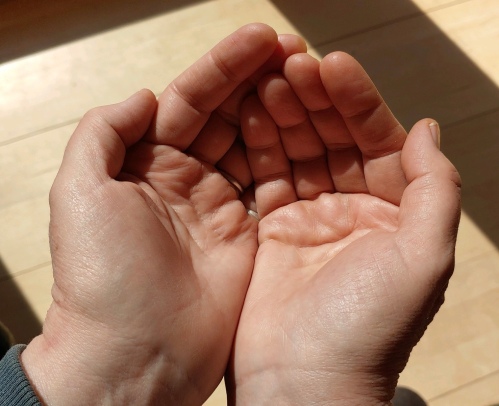As we navigate into our third week now of what looks to be an indeterminate period at home with all the personalities of our constellation, there is a quick cliff notes check list that can guide us. You might have heard the expression that the human being is a threefold being; a willing, a feeling and a thinking being. This threefold being is a shorthand description developed by Rudolf Steiner that we refer to regularly in Waldorf Education. It is a thumbnail sketch for a whole human being that we can keep in our back pocket at all times.
When something seems off, when the personalities in our home don’t seem to be fitting together, when we are endeavoring to navigate homeschooling or any other tasks at hand, we can always ask ourselves; are my needs or my child’s needs for willing, feeling and thinking being met? Has our day or week been overly weighted toward willing, feeling or thinking? Along the journey of human development there are windows where these aspects crave more attention, and that is wisdom for our home health manual.
Children in the first 7 years favor the willing. What is willing you might ask? Willing is generally doing and in particular it is anything we do with our limbs. We all need doing. Our bodies need to get up and do. This is the kneading of dough, the gathering of firewood, the mopping of the floor. When we’ve been sitting too long, sometimes things go awry. For young children they have a lower tolerance of sitting and a higher need for doing. When things go awry we can take a dose of doing; wash windows, prepare the garden bed, put away the snow shovels.
Children in the second 7 years of life favor the feeling. They sense feelings with much greater sensitivity than adults. Feelings we associate with our hearts and require connectivity, relationship. Have we found ways to connect? Singing together. Painting. Decorating the house. Storytelling. Storytelling can be as simple as describing what you did for fun, your first job, people in your neighborhood growing up.
Yesterday I told my daughter the story of a time in my neighborhood growing up when my brother brought home an orphaned raccoon. We had a neighbor who was known to be especially good with animals, her name was Frannie. She was the pianist for my mother’s choir. She raised the raccoon, Rocky.
You can make the story longer by describing the people or the places with greater detail. Or it can be short and sweet. Honoring the need for feelings is not the same as talking about emotions. This is a much more basic awareness of the presence and need for activities that allow feelings to be present. The easiest way to bring a mob of different folks and their feelings together might be to go outside and share in the discovery of the natural world. Together you can find ways of reflecting the discoveries you make there inside your home.
Thinking is so culturally dominant that one cannot avoid exposure to thinking activity. We need it and especially crave it in the third 7 years from 14-21. For thinking you only need to wonder, to ask questions. Thinking isn’t about answers. Most often our lives are overly dominated by thinking activity, yet we can find activities that allow us to bring feeling and doing into thinking. Drawing maps has become a truly beloved activity in our home. If the thinking part of an academic lesson becomes draining, drawing a map of the part of the world involved, or somewhere that the child has an interest or a living curiosity about can be a nice compliment. Calling or writing to a relative that has work or life experience related to an academic topic can ignite the child’s inspiration to pursue it further.
One important overriding tidbit is that children all the way to adulthood are primarily learning through imitation. So we can’t just say, “go put the shovels away” and expect it to remedy our doldrums or theirs. We need to do too! When children experience the wholesomeness of our engagement with our own need for thinking, feeling and willing they mirror our attentiveness to it. Once we make a start alongside them, they may well take it on in earnest. Then we can quietly do something we need to do once they have leapt with us into the wholeness of willing, feeling and thinking. Sometimes they’ll even shoo us away!












